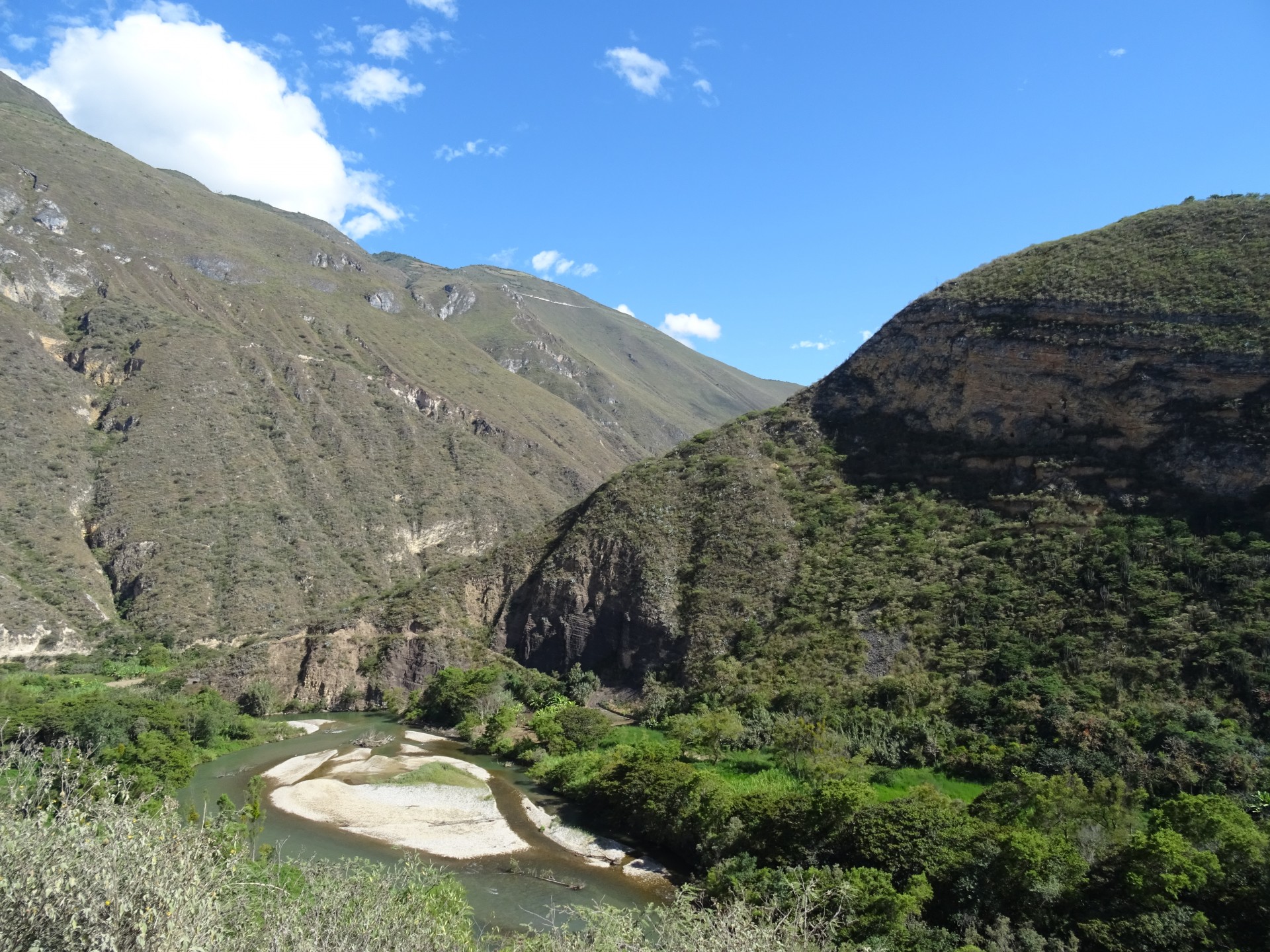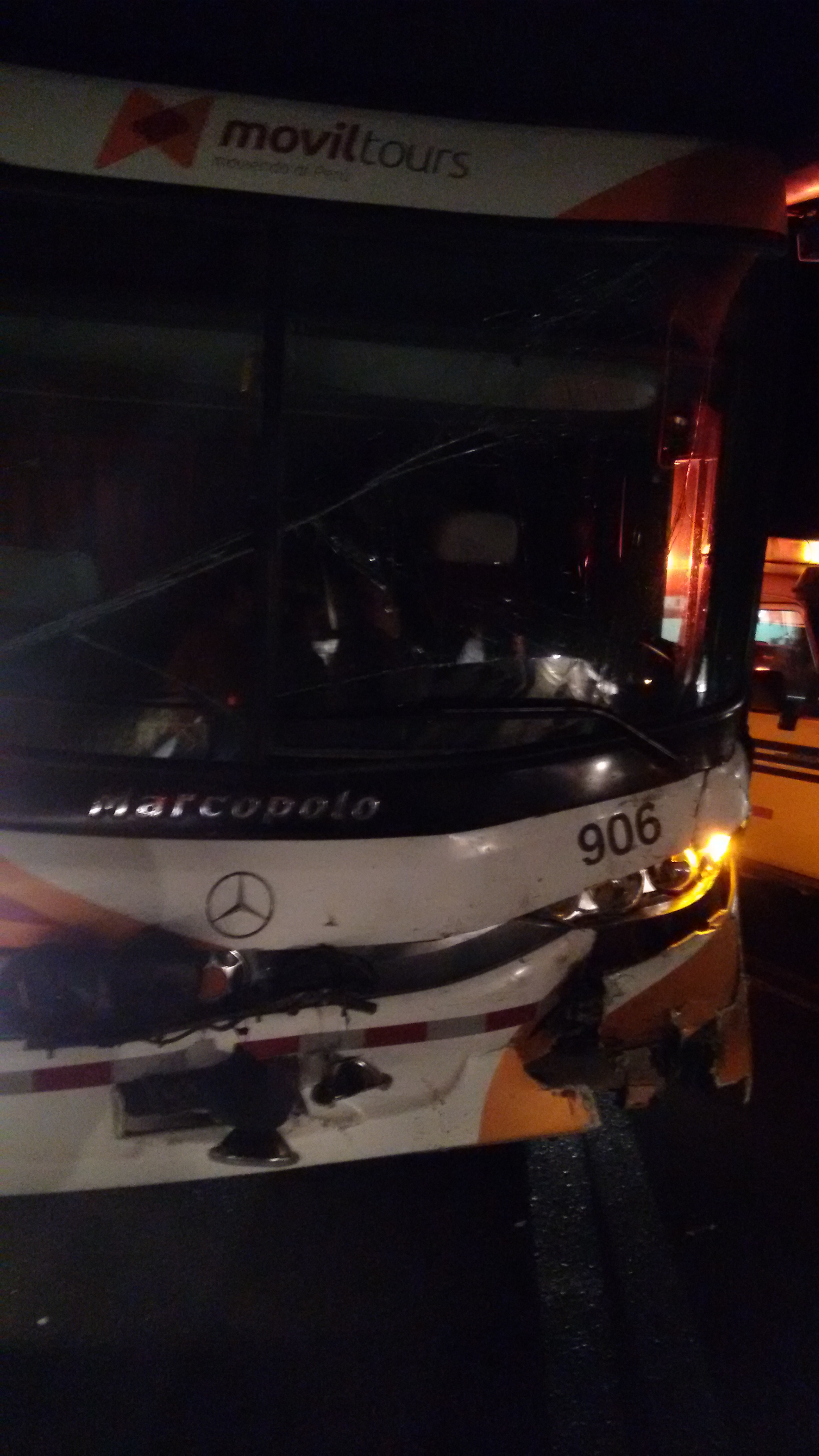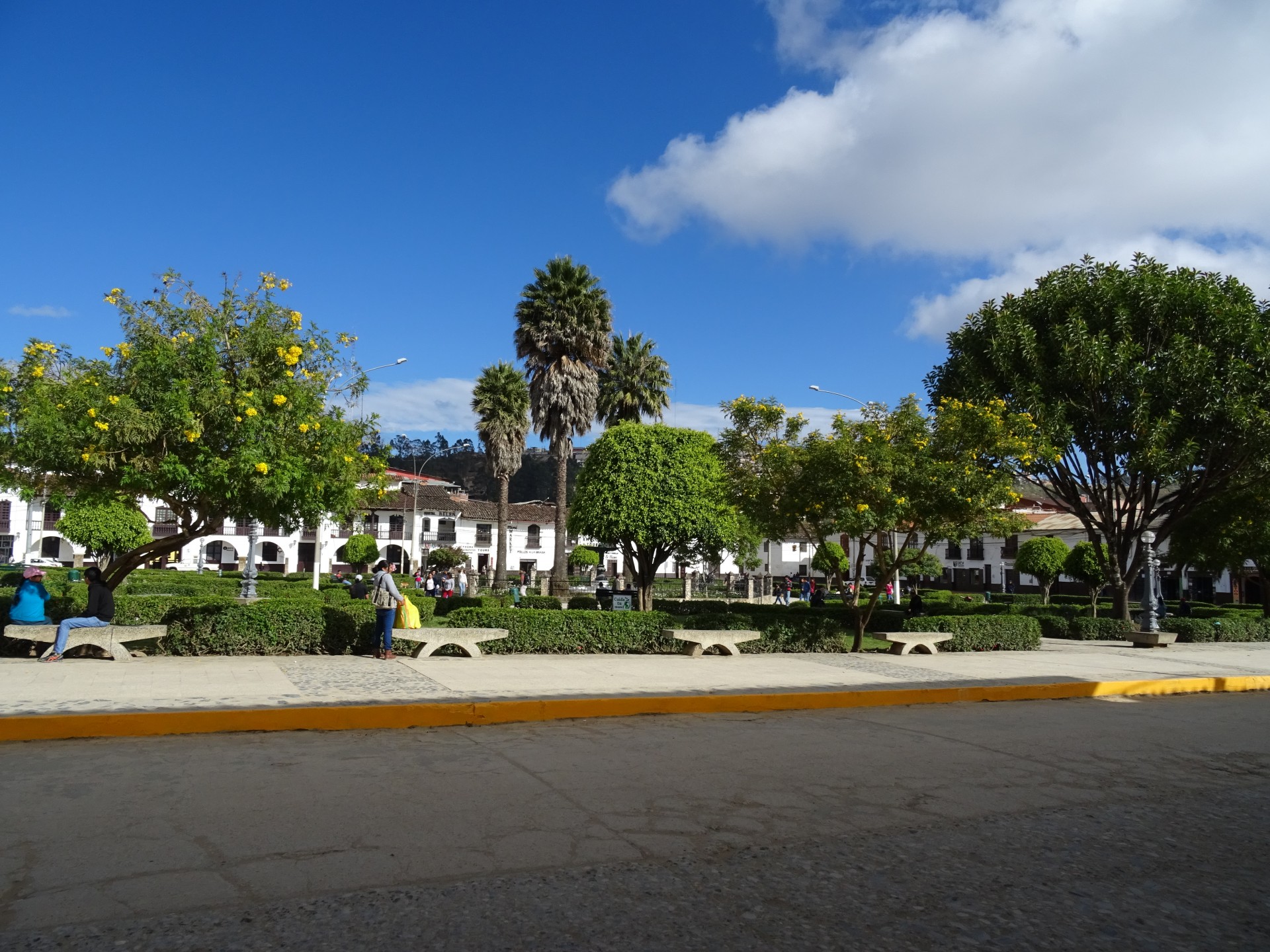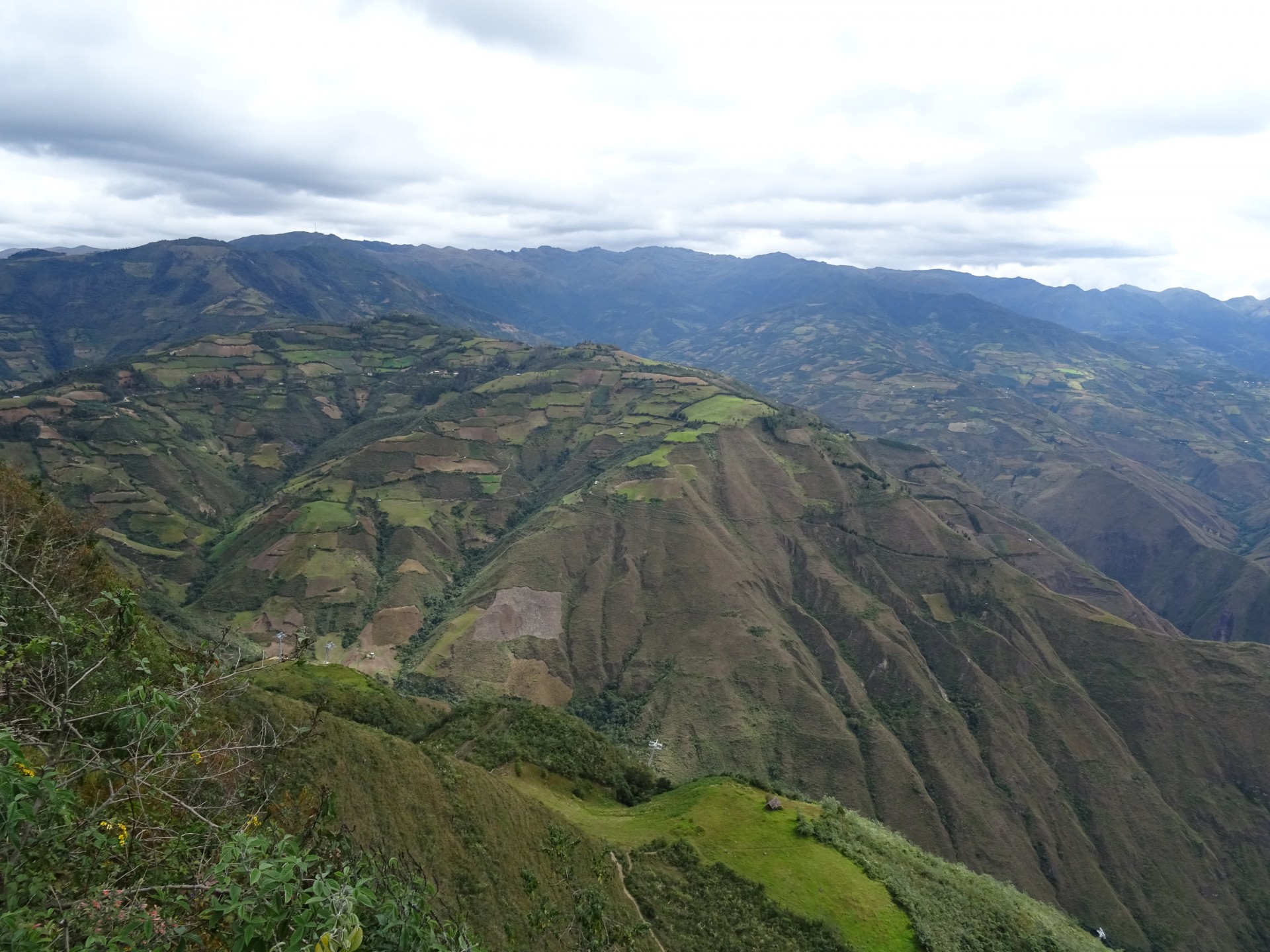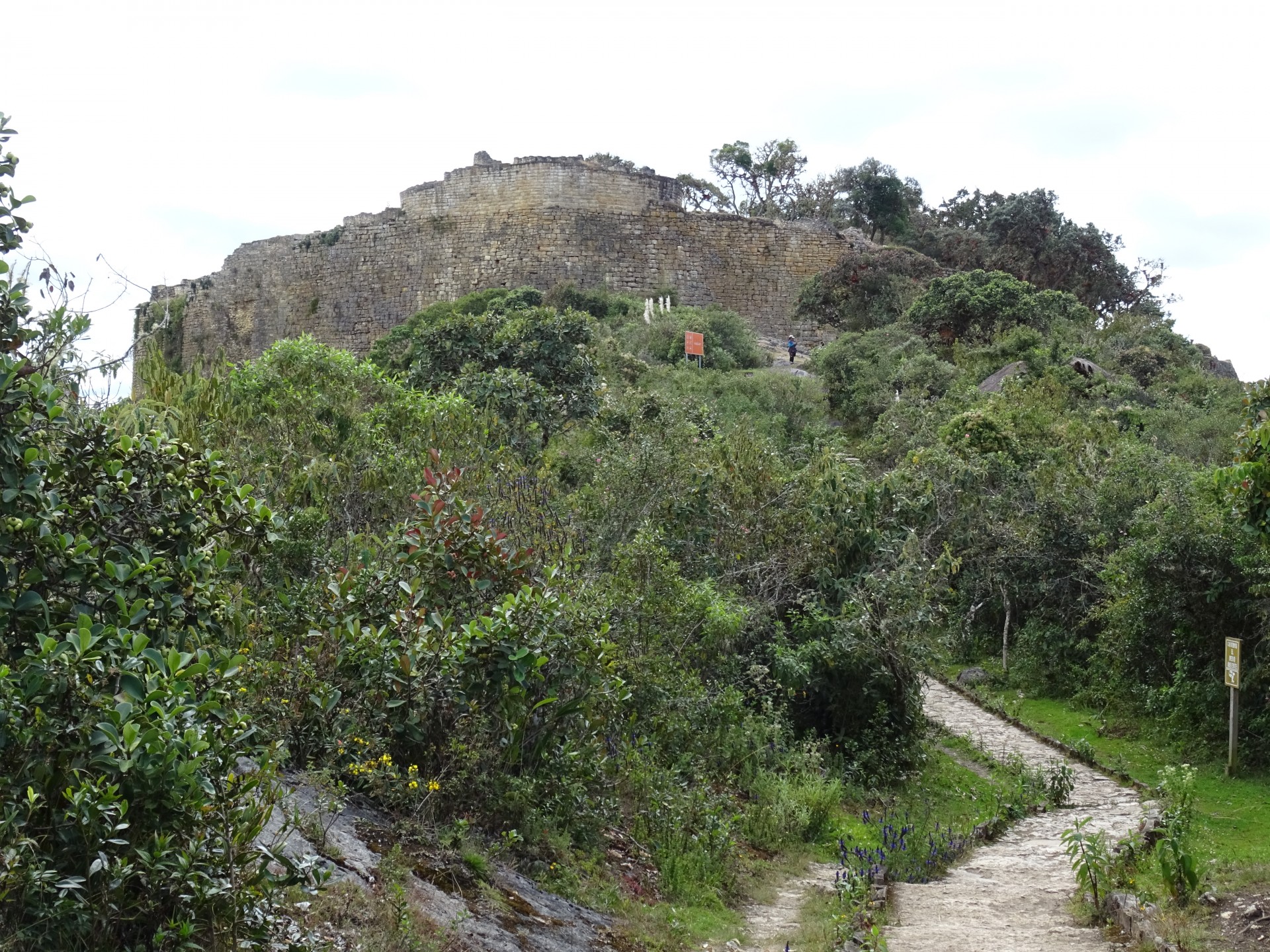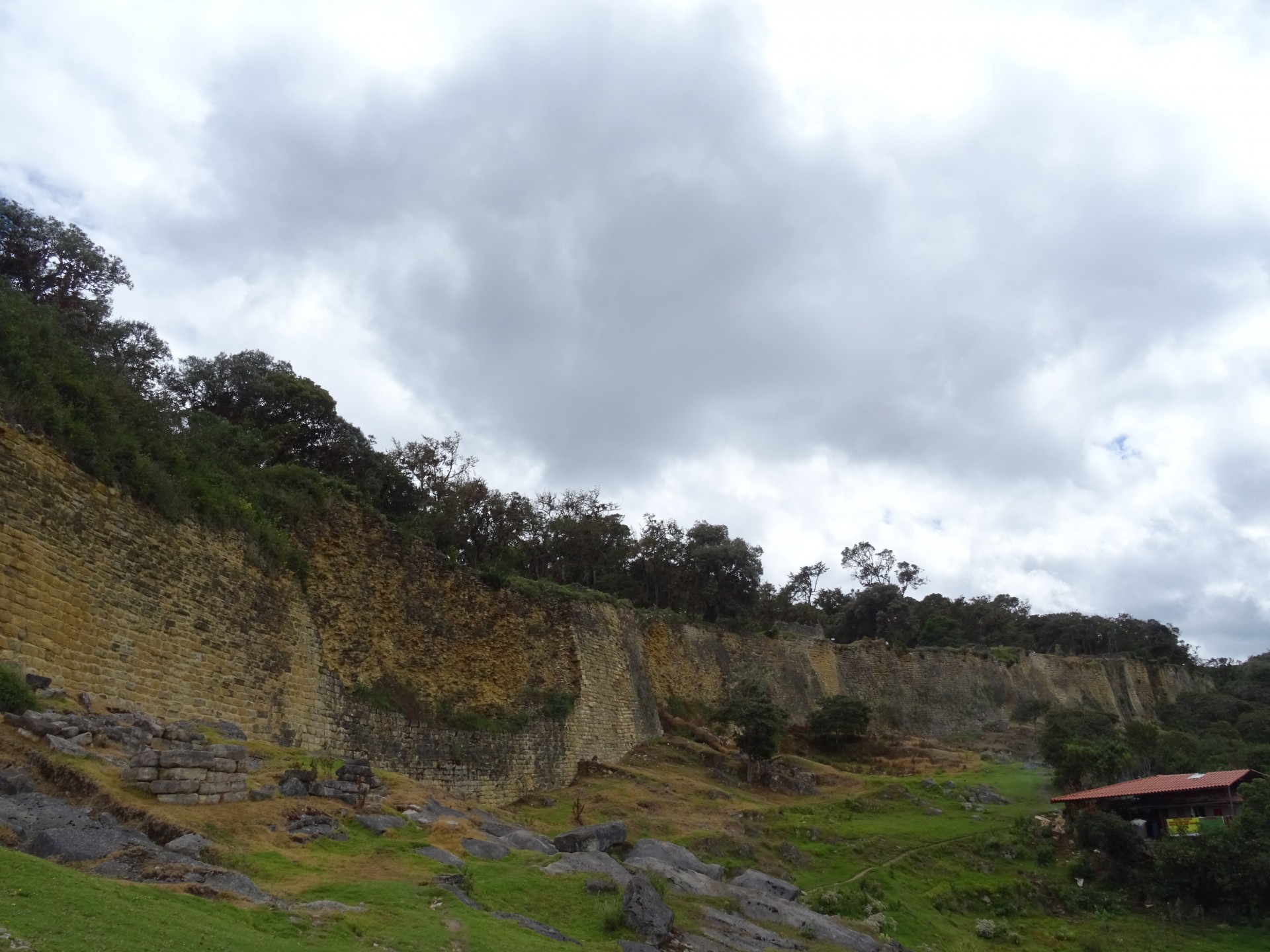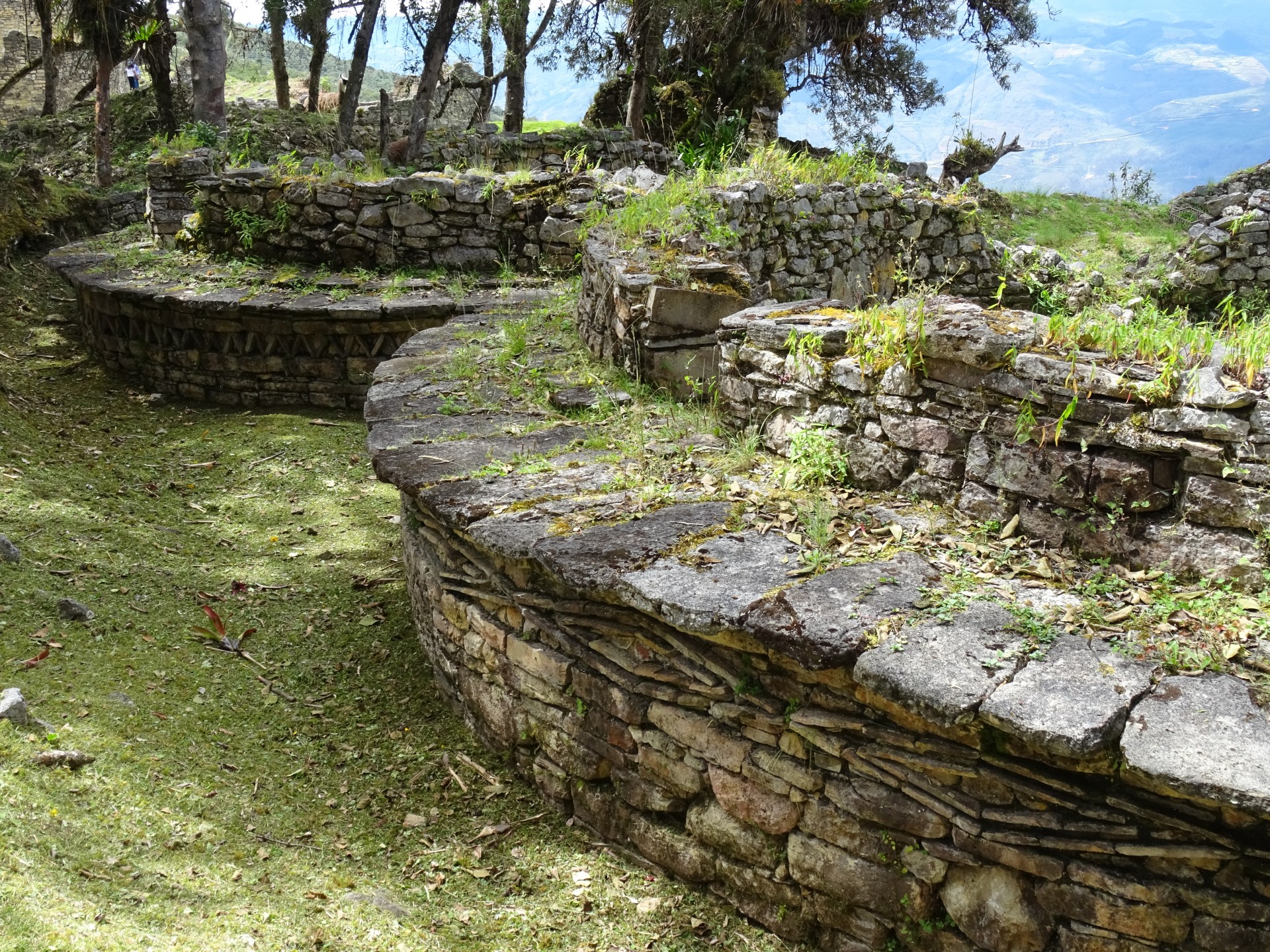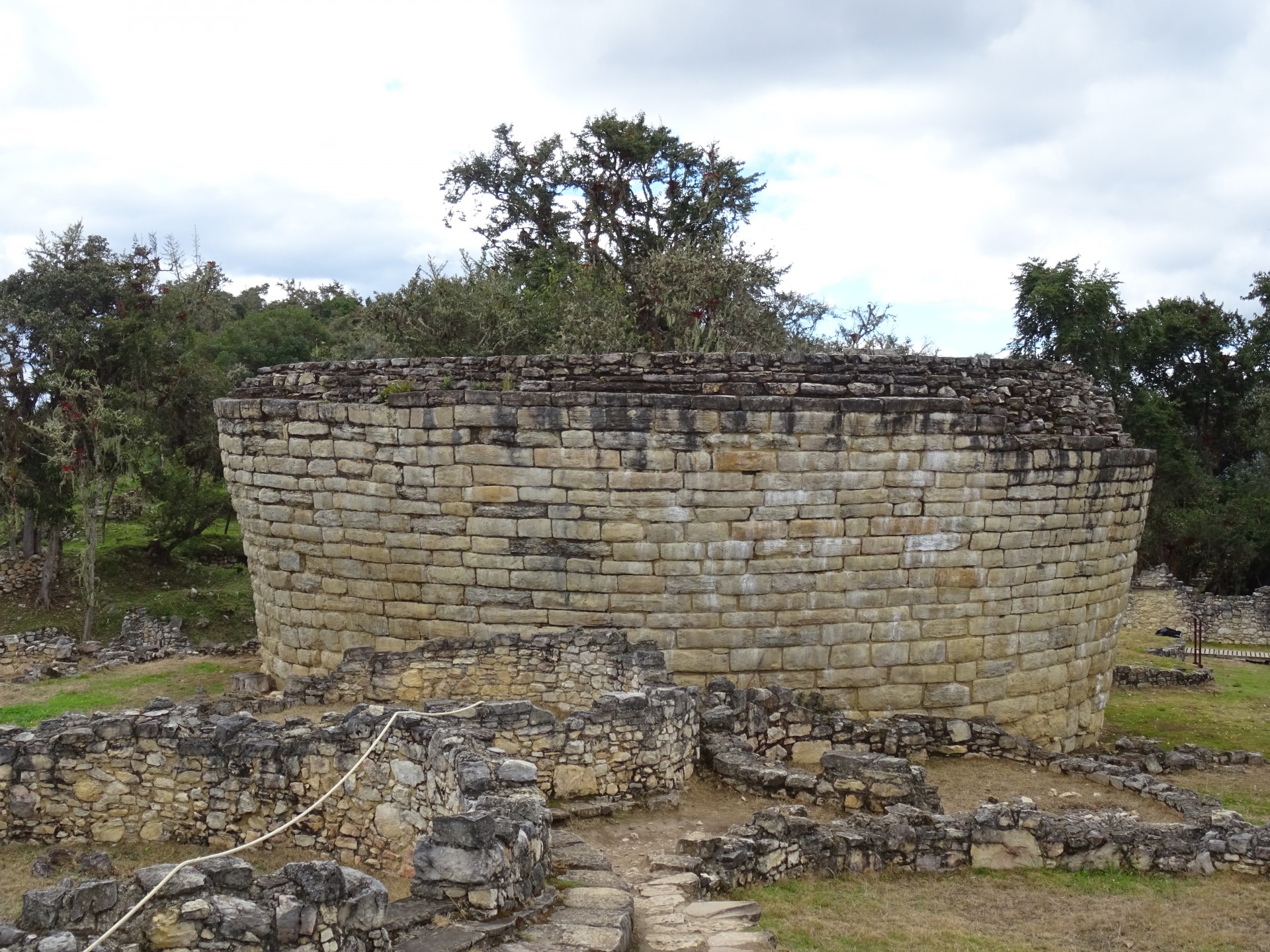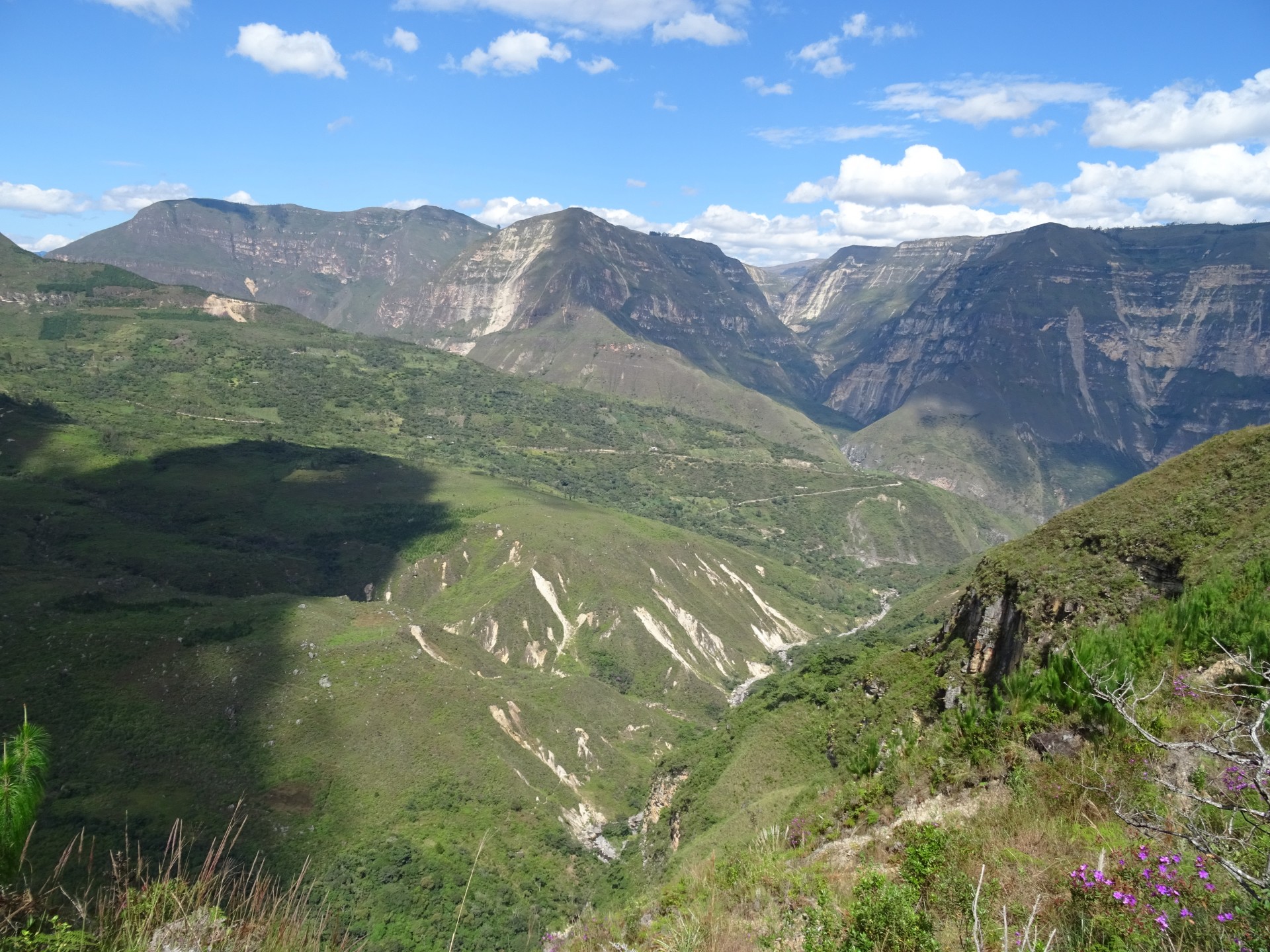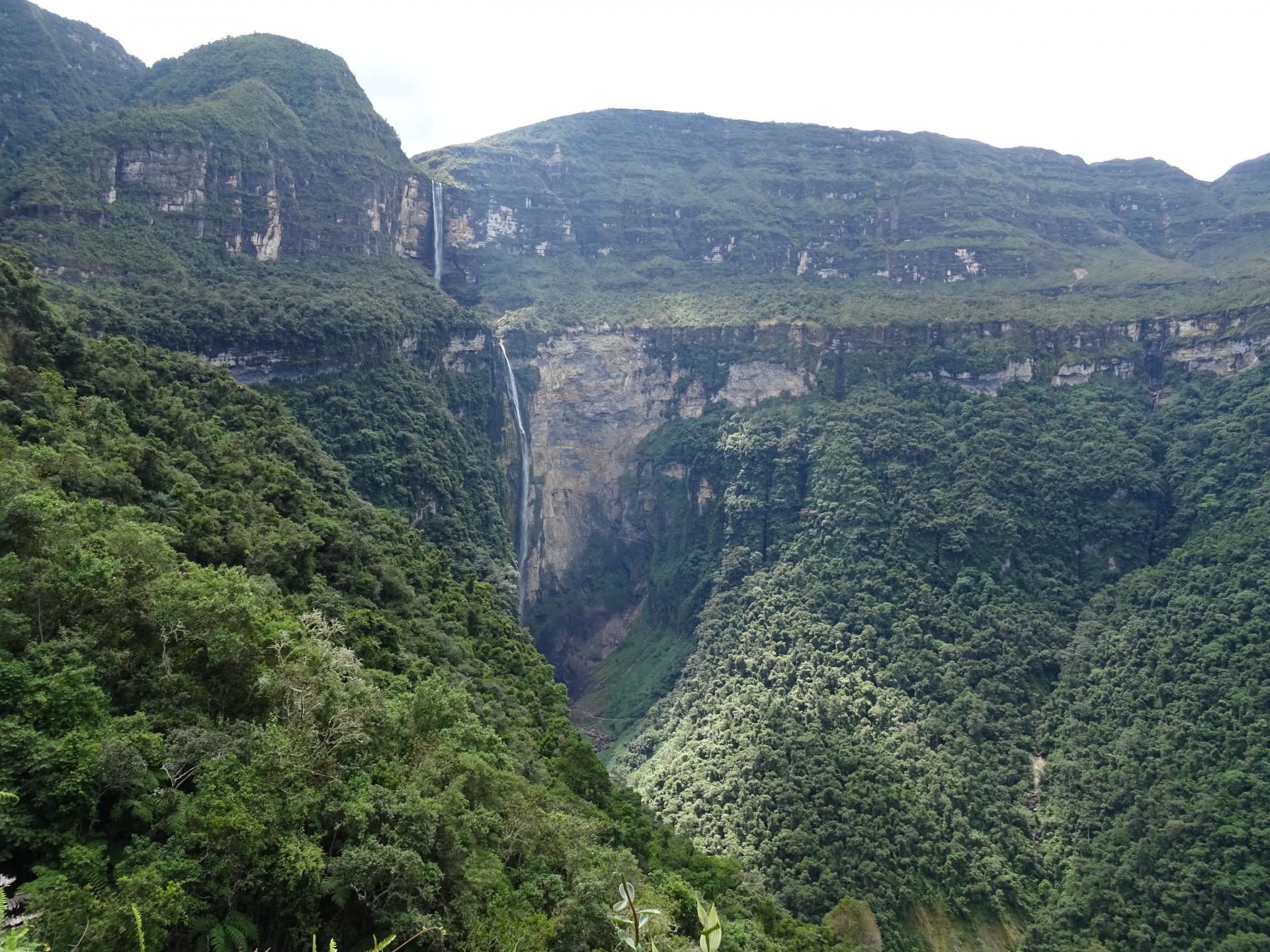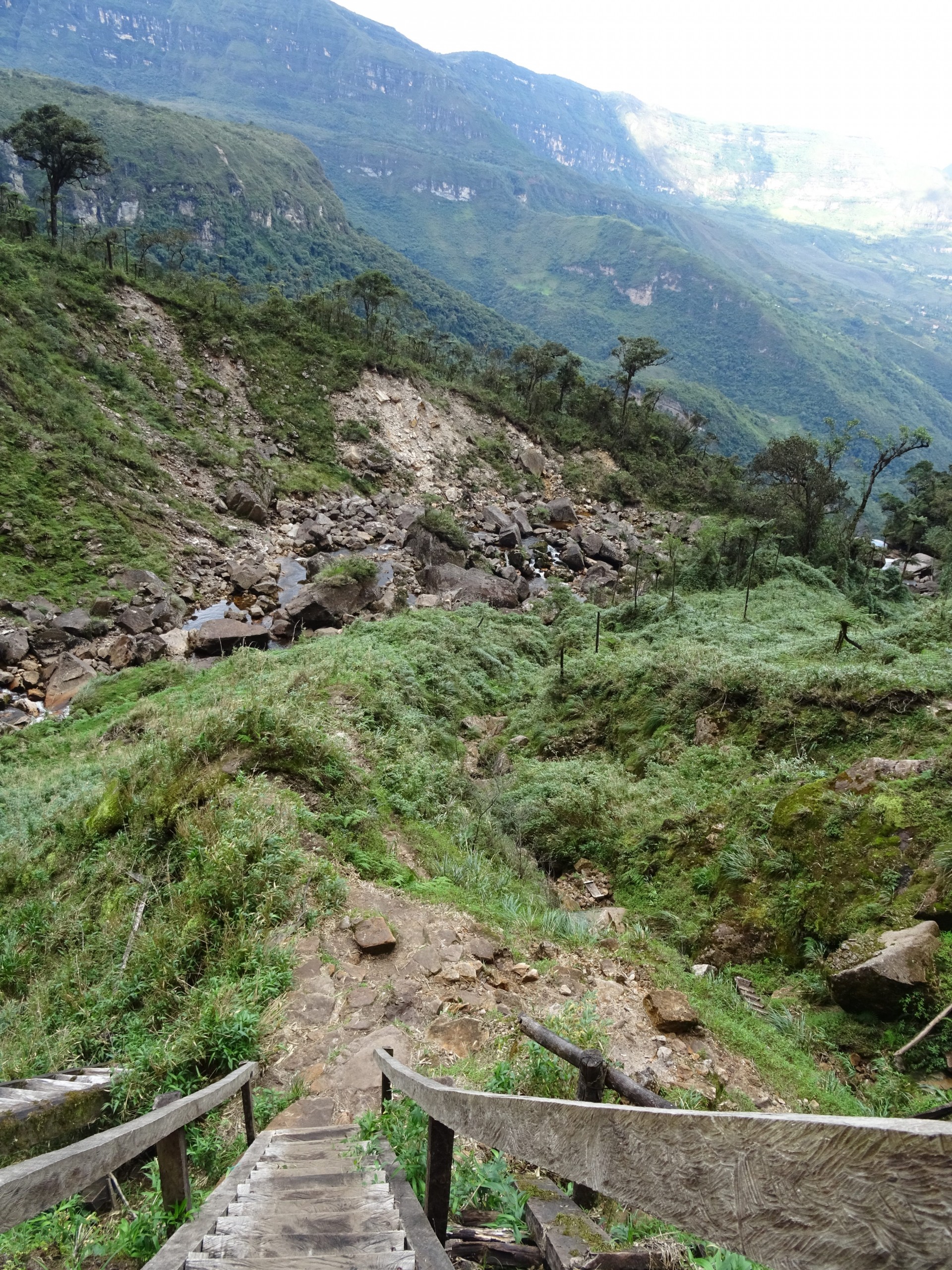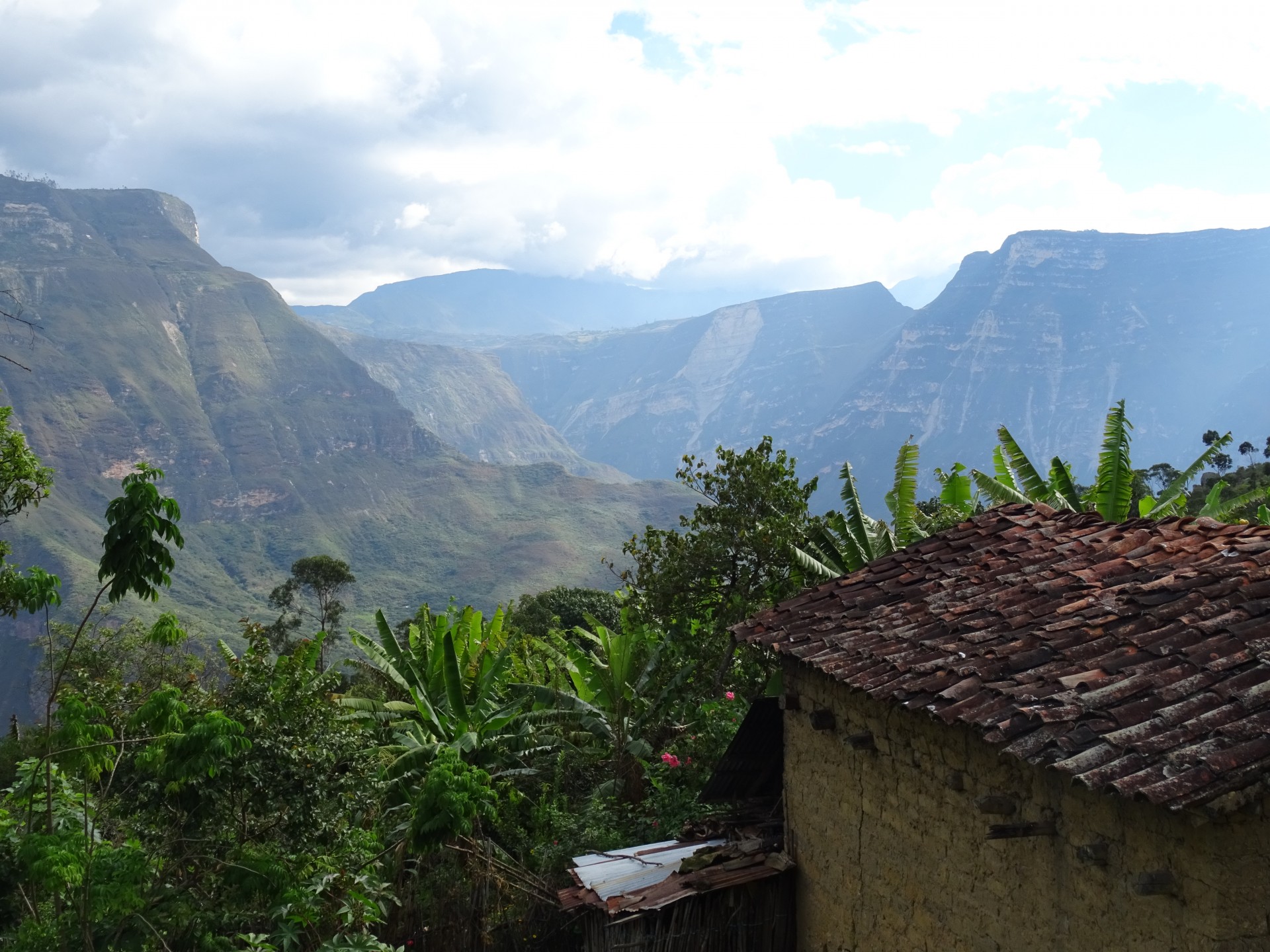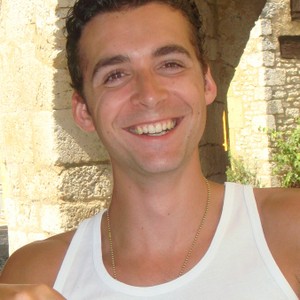Monday 27th June 2016 –
I took the bus to Chachapoyas. This wouldn’t be of any note – I take the bus everywhere, and it’s probably one of my less original ways to start an entry – but for three reasons. One – I don’t think I mentioned last time that I was going to Chachapoyas. Two – it’s a windy journey into the mountains. I don’t like windy journeys into the mountains. I might have mentioned that once or twice before. Three is the most important though. Three – we may have had a crash.
The tale begins in the dark Peruvian pre-dawn, about 5AM by the watch. The bus was asleep, or I can only assume so, as I was, and maybe the driver was too. One minute I was dreaming the dreams of a young lad on a bus, and the next I’m thrown forward into the chair, almost into the next. Shoulda put that seatbelt on I guess – it’s actually a legal requirement in Peru, surprisingly. I sat there as my fellow Peruvian survivors assessed themselves for damage – none taken – and we settled back down. I didn’t think too much of it – it kind of just felt like we’d hit a massive pothole.
It soon became apparent that we weren’t moving anywhere, so I decided to take a gander outside at what I assumed was a flat tyre. It wasn’t. The bus had been strangely malformed – a considerable amount of the bumper was missing, along with the lights, and the front windscreen had an odd curve that I’m sure wasn’t in the original design. The driver appeared to have some trouble getting his door open – be was back outside, alive and well. The other vehicle hadn’t fared quite so well. A Toyota pickup, the sort of thing you generally consider as quite solid, was about half its original length.
Seemingly, everyone was OK. The police hadn’t arrived, and wouldn’t do so for another hour (despite only being twenty minutes to Chachapoyas), but noone was lying on the floor and screaming. I watched for while as a backlog of night traveller attempted to navigate past our roadblock, before resolving to go back to sleep. By 8AM, another bus finally arrived to take us away. Prompt.
Chachapoyas didn’t endear itself to me straight away, that’s for sure. It was cloudy and cold, and I was tired. I didn’t want to be cold. I wanted sun. Also, the town was fairly miserable aside from a block radius around the central plaza. Negatives and more negatives. As you can see, I was in a bad mood. The only remedy – some overdue sleep.
I woke the next morning ready for my next trip – Kuelap – apparently the ruin to rival Machu Picchu, if only anyone ever visited it. Strictly, that’s not true – there seemed a decent number when I went, though granted not the 2,500 Machu Picchu pulls in each day – and the majority were Peruvians too, an older German lady and middle aged French man aside. Apparently, they’ve created a solution to this – a cable car mid build and slated for early 2017 should cut the 2 1/2 hour journey to maybe 1 1/2 hours. I was of the opinion that the 15+ hour bus to Chachapoyas from Trujillo might be more of a barrier, and that a bit of advertising might work better but what do I know? If they can find 2,500 tourists in Chachapoyas I’ll eat my hat.
Kuelap loomed high as we strode around the outside of its imposing walls. Regardless of potential cable cars – the drive through the mountainous subtropics had been a treat – but this was what we were there for. When I went to Choquequirao, one of the things that was mentioned was the similarity to Chachapoyas (the town being named after the people) building techniques, and the possibility that the Incas took them south as slaves, and I could finally see it. Kuelap was an important part of the Chachapoyas civilisation, originally built before the Incas came onto the scene, yet here was the rough, irregular stonework and cement like substance of Choquequirao. Machu Picchu, on the other hand, and the Inca parts of Cusco, use perfectly smooth, regular stones, free of any glue.
Contrary to first impressions, Kuelap was not a fortress, rather the thick walls were more a show of power to the residential populace, and this became more obvious as we made our way inside. Walls of varying heights crawled out of the ground everywhere, the last remnants of once loved homes. Not your usual homes, though. Circular homes! It sounds simple, but apparently the Chachapoyas built them like that to better withstand earthquakes, and it makes for a city that ought to have come out of a fantasy novel. The unkempt appearance, with the tropical trees growing around the ruins everywhere, in contrast to Machu Picchu’s clean lawns, completed the mysterious atmosphere.
Evidence of their past lives still abounds. Little tunnels were fashioned in each home to house guinea pigs – chickens are not native to this land – and the temple at the southern end contains human remains. Not that we saw those. Climbing or sitting on the walls was (understandably) banned. As was walking past roped off sections, and your assume that they don’t ask you to play music loudly. One local guy seemed unable to stop himself doing all these, and our guide was almost ripping his hair out from the number of times be tried to tell him not to.
One last piece of the puzzle of the Chachapoyas demise lies on the second, higher level, on the north side of town. A wall of distinctly rectangular formation, the only Inca building in a show of dominance, the second level was built after their arrival. The Chachapoyas were beaten but not broken, and they rebelled, teaming up with the Spanish when they invaded. Unfortunately, Incas beaten, they were betrayed. The Spanish didn’t enslave them, they slaughtered them.
Back in the minivan the next day, I was on my way to Gocta waterfall, either the third, fifth, or thirteenth highest waterfall in the world depending on your source. I’m inclined to go with the latter, but either way, at 771 metres high it’s impressive. If I’m honest, I’ve seen enough waterfalls, and was mainly going for a nice walk in the country with an added view at the end. It was nice, too.
It was also very hot. Kuelap bad been chilly, and justified the long pants. Against expectation, here we were lower, and it was a lot warmer. Still, the surrounding table top mountain views and craggy rock faces, interspersed with semi arid greens, provided ample relief. Contrary to Peruvian belief, it was an easy walk, and it wasn’t long before I reached the waterfall.
La catarata Gocta, is divided in two, the bottom half of the fall is about twice the size of the top, hence why it can’t compete with Guyana’s Kaieteur in highest single drop stakes. While awesome, it also can’t compete on that front either, not having the same volume of water ploughing through, or being able to sit over the edge. Beautiful views, a waterfall far away from the tourist trail, and the ability to get up close and personal. What not to love? This folks, is what happens when you’ve seen too many waterfalls.
Itching to get a move on, I took the bus again that night, back down the mountains to Chiclayo, where I’d had a short layover on the way. This time no crash. Arriving in the morning, I had no intention of staying there, but faced a whole day before k could get the bus in the evening. In my post night bus zombie state it was not particularly interesting. There didn’t seem many places I could get some breakfast (I arrived at 5AM and didn’t get any till 10AM), and for such a hot place it took a long time to find any icecream. How am I supposed to survive without icecream?
Eventually, I was back in the bus, up the coast, across the border, into Ecuador and arriving in Guayaquil. That’s two night buses in a row, guys. Very tiring. Some might say heroic, even…




